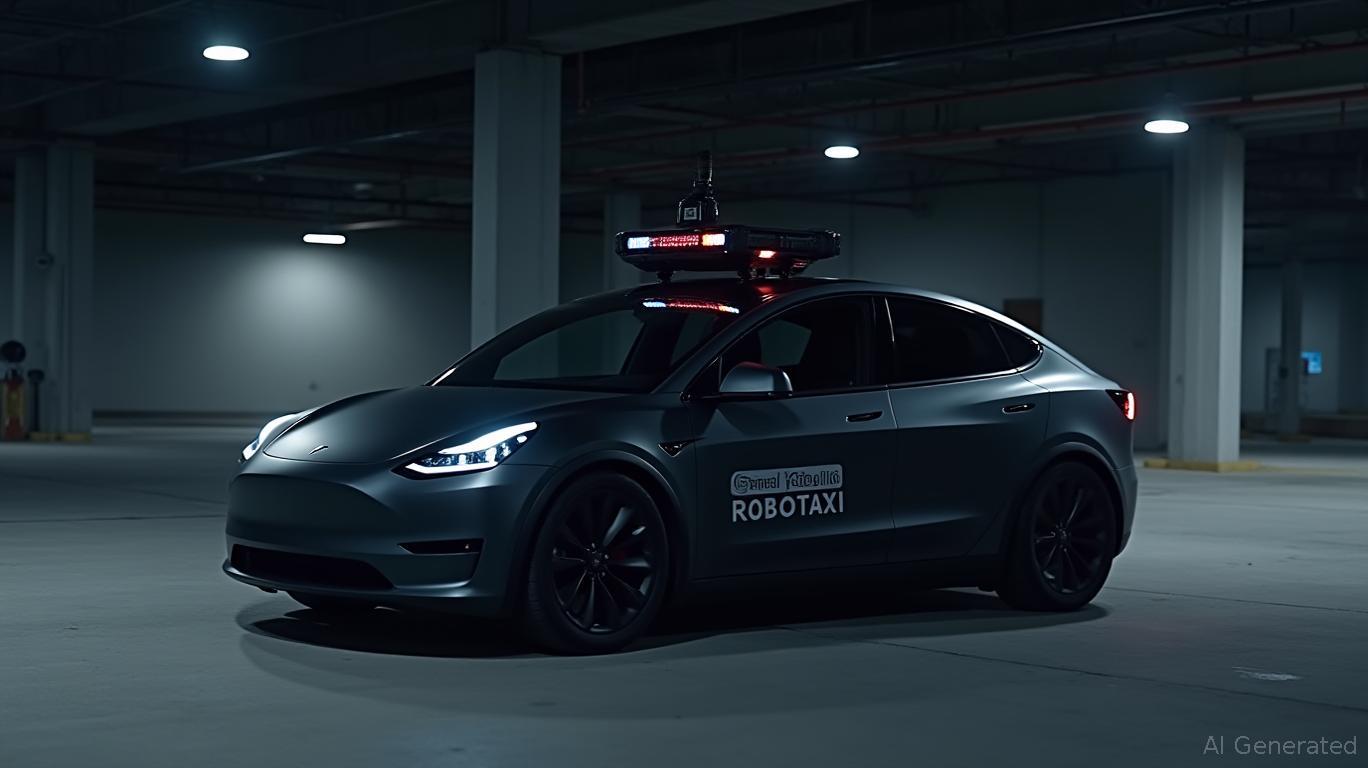Tesla's Robotaxi Gambit: Navigating Regulation and Rivalry in the $1 Trillion Autonomous Mobility Market
Tesla's planned June 2025 launch of its robotaxi service in Austin is a bold move to stake its claim in the nascent autonomous vehicle (AV) market. But the road ahead is littered with potholes: regulatory uncertainty, stiff competition from tech giants like Waymo and Zoox, and lingering doubts about the reliability of its teleoperation systems. For investors, the question is whether Tesla's vertical integration, early-mover advantage, and Elon Musk's relentless focus on safety can outweigh these risks—or if the company is overreaching in a market still defining itself.
Strategic Positioning: Leverage or Liability?
Tesla's decision to deploy its robotaxis using existing Model Y vehicles is both a strategic strength and a potential weakness. On one hand, this approach reduces upfront capital costs and allows it to tap into a preexisting fleet of 500,000+ vehicles equipped with hardware for Full Self-Driving (FSD). By contrast, Waymo and Cruise have invested billions in purpose-built AVs, which may offer superior safety margins but lack Tesla's scale. Musk's focus on incremental software updates—rather than overhauling hardware—aligns with his “software-defined car” vision, which could prove cost-effective if FSD's capabilities mature.
However, Tesla's reliance on a consumer vehicle platform introduces risks. The Model Y's design prioritizes affordability and mass production over the redundancy and sensor density found in dedicated AVs. This could limit its ability to operate in complex urban environments or adverse weather conditions, at least in the near term. Competitors like Zoox, which has designed a purpose-built, lidar-equipped pod, may hold an edge in safety-critical scenarios.
Regulatory Tightrope: Texas's HB3837 and NHTSA Scrutiny
Tesla's delayed September 2025 launch deadline—pushed from an earlier June target—reflects the thorny regulatory landscape. Texas's HB3837, effective January 2026, imposes strict requirements: permits from the new Autonomous Vehicle Commission, emergency response plans, third-party safety audits, and insurance mandates. While Tesla's compliance team is working to meet these rules, the law's vague enforcement timeline and the state's January 2026 deadline create uncertainty.
Compounding this is federal scrutiny. NHTSA's ongoing investigation into Tesla's Autopilot system—specifically its tendency to misclassify lane markings and fail to detect stopped vehicles—could delay or restrict the robotaxi rollout. A worst-case scenario could see regulators mandating costly hardware upgrades or software rewrites, eating into Tesla's margins.
Market Potential: A $1 Trillion Prize, but Who Wins?
The autonomous mobility market is projected to hit $1.5 trillion by 2030, driven by ridesharing, delivery, and last-mile logistics. Tesla's early entry into this space offers a first-mover advantage, especially if it can monetize its FSD software stack. Unlike Waymo, which relies on Alphabet's deep pockets, Tesla's vertically integrated model—controlling manufacturing, software, and even charging infrastructure—gives it flexibility to price competitively and scale quickly.
Yet the competition is formidable. Waymo's partnerships with Jaguar and Fiat Chrysler give it access to luxury and commercial fleets, while Cruise (backed by GM) benefits from automotive manufacturing synergies. Zoox's fully electric, driverless pod design may better suit urban ride-hailing. Tesla's edge lies in its direct-to-consumer brand equity and the sheer volume of vehicles on the road—data that trains its AI models faster than rivals.
Data to Watch
Tesla's stock has been volatile, reflecting investor sentiment about its EV demand and FSD progress. A sustained rise above $250 would signal confidence in its AV ambitions.
Growth in this sector will determine Tesla's valuation. If software revenue (e.g., FSD subscriptions) exceeds $10 billion annually by 2030, Tesla's robotaxi could become a cash cow.
Investment Takeaways: Risk vs. Reward
Tesla's robotaxi is a high-risk, high-reward play. Near-term catalysts include:
- Regulatory clarity: If Texas's HB3837 is implemented smoothly and NHTSA's findings are benign,
- Technical milestones: A successful teleoperation system and FSD version 12 (rumored to eliminate human intervention) could solidify investor confidence.
Risks include:
- Regulatory delays: A repeat of 2023's Model 3 delay—this time due to compliance—could hurt margins and morale.
- Competitor catch-up: Waymo's partnership with Walmart for autonomous delivery could erode Tesla's logistics dominance.
Conclusion: A Bumpy Road, but Worth the Drive?
Tesla's robotaxi is more than a product launch—it's a bet on its ability to redefine mobility using its software and scale. While regulatory and technical hurdles loom large, the company's integrated ecosystem and first-mover advantage position it to capitalize on a trillion-dollar market. For investors willing to endure near-term volatility, Tesla remains a compelling long-term play. As Musk often says, “The risk is not in moving fast; it's in standing still.” In this race, Tesla is still moving—and the finish line is getting closer.


Comments
No comments yet